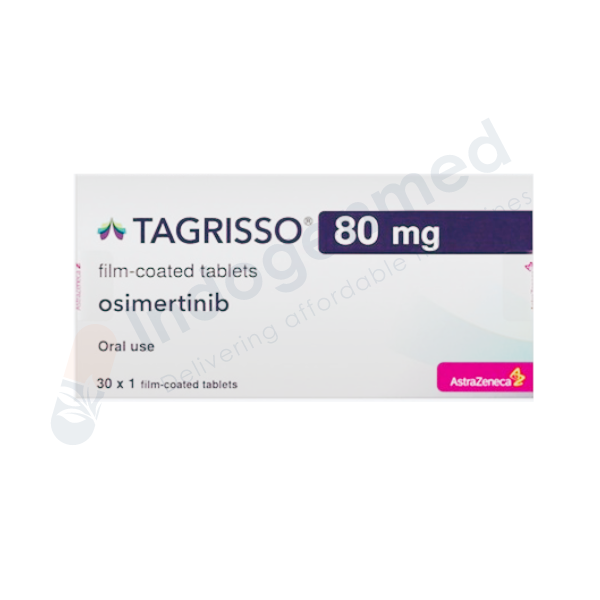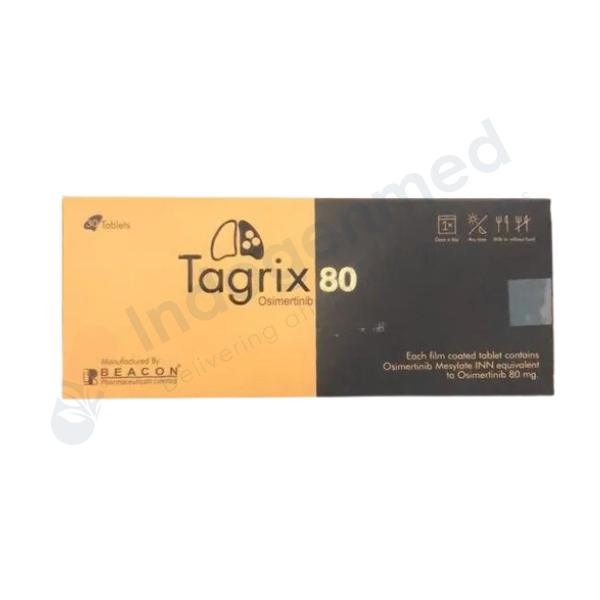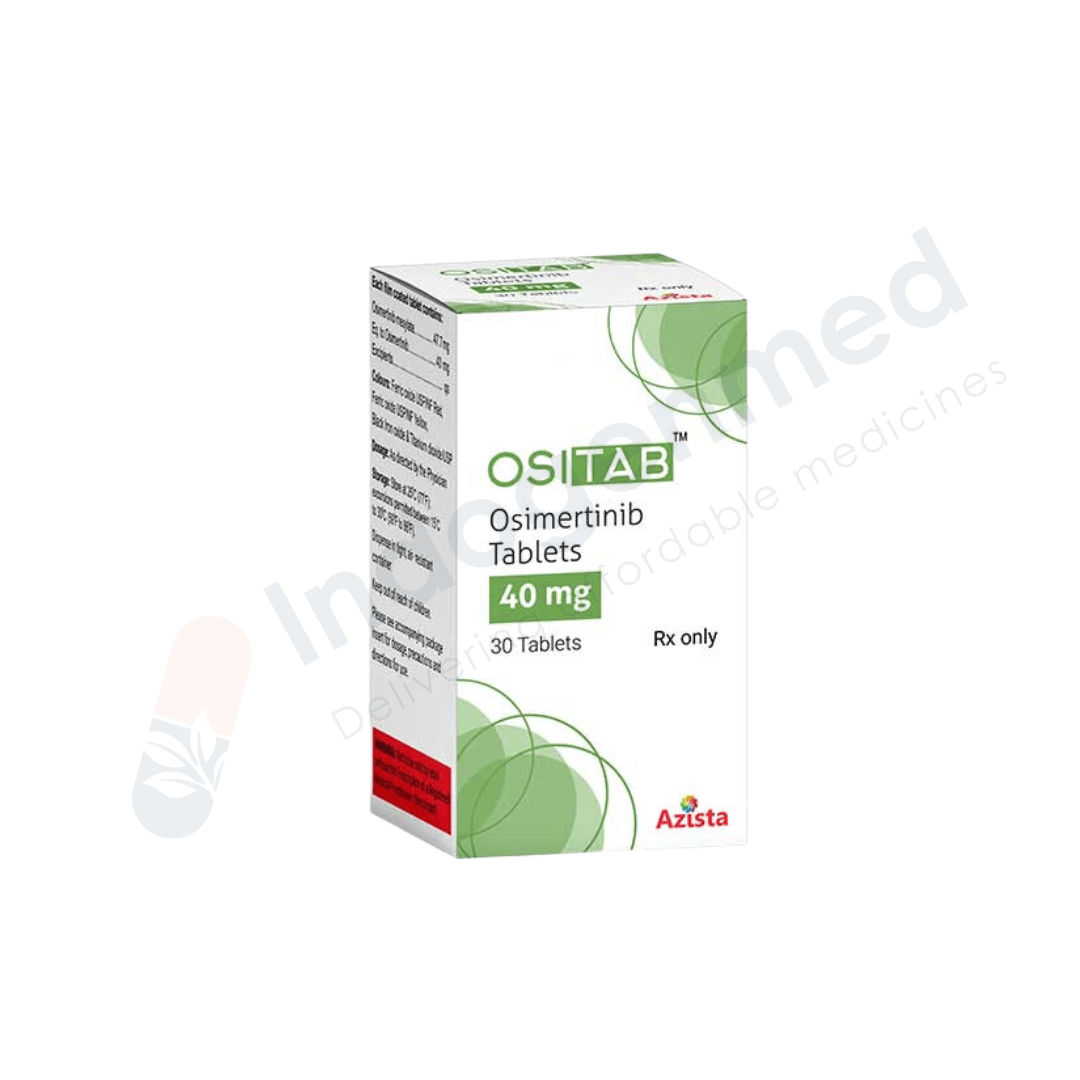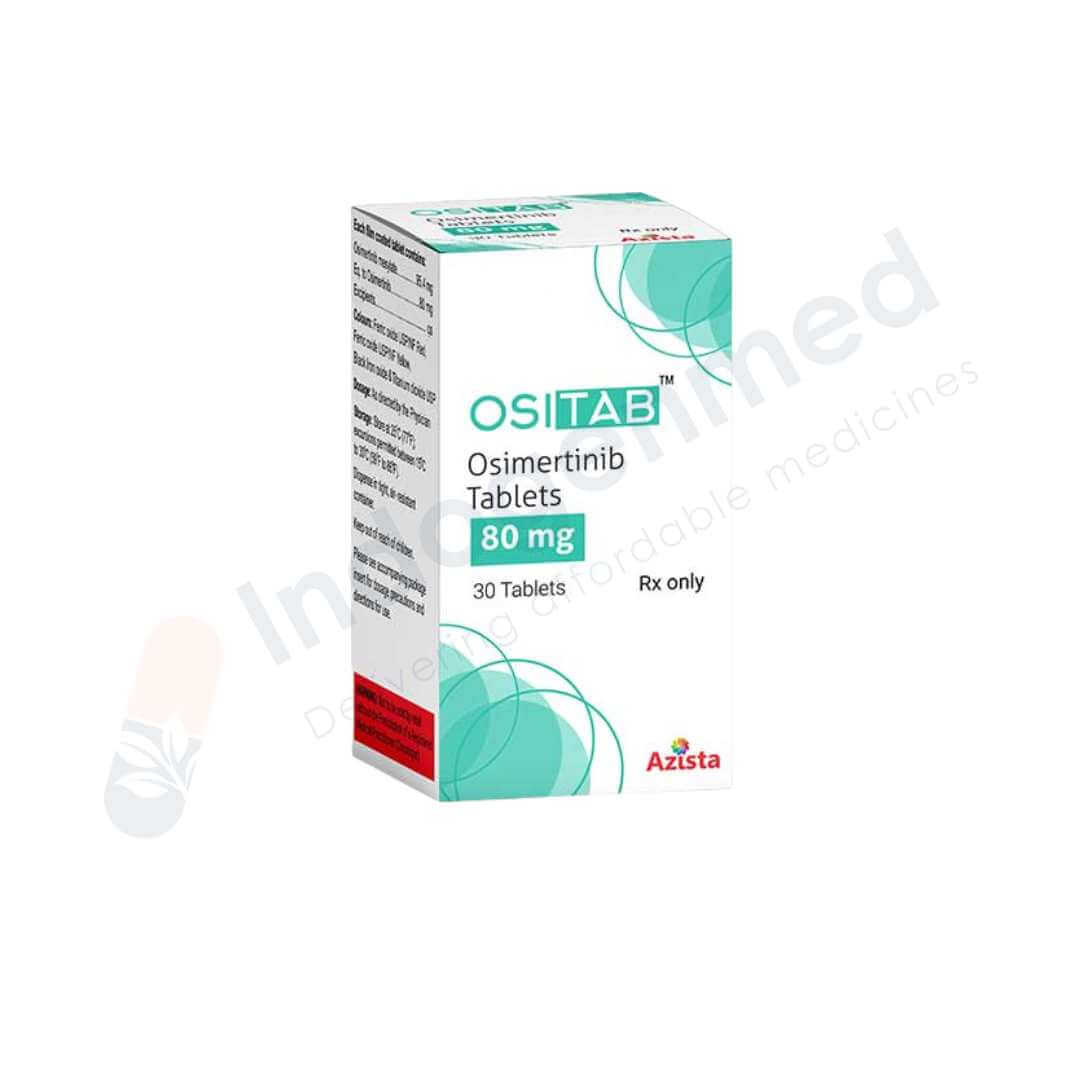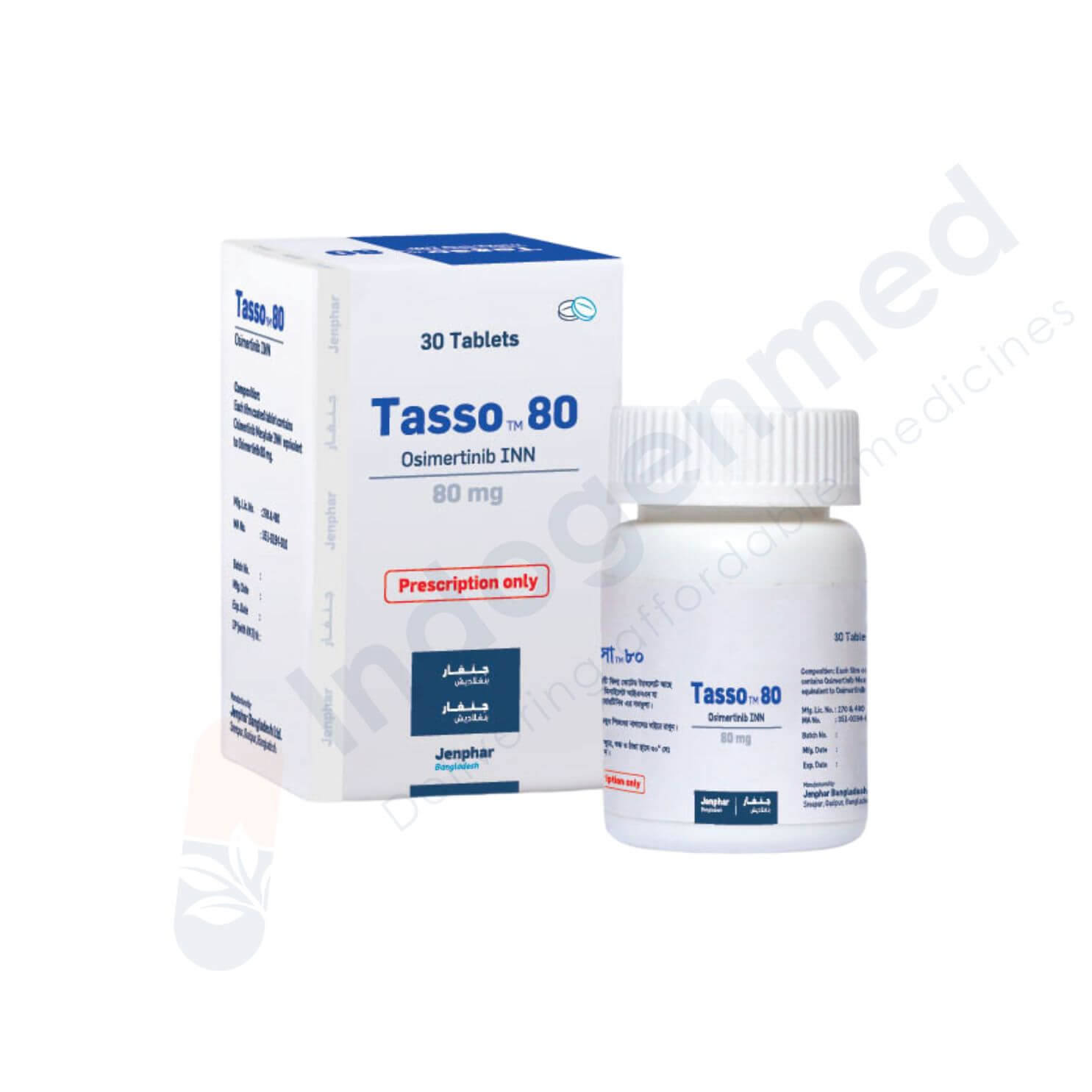AVAILABLE MEDICINE FOR Search By Molecule
Overview
Osimertinib falls under the drug class of Tyrosine Kinase inhibitors and is used to treat non-small cell lung cancer (NSCLC), the most common form of lung cancer. As a third-generation medication, Osimertinib boasts enhanced efficacy in managing symptoms compared to its predecessors, offering new hope to patients with NSCLC.Basic Information Regarding Osimertinib
Osimertinib is popularly known by its brand name Tagrisso.
Drug Class: Antineoplastic and kinase-inhibitor.
First Developed in: AstraZeneca started developing the drug in 2009 and it was completed in 2012.
Regulatory Status: The molecule was approved by the FDA in 2015 and branded Tagrisso received full approval in 2017.
Method of Administration: Oral tablets.
Chemical Formula: C28H33N7O2·CH4O3S
Uses of Osimertinib
Osimertinib is a targeted therapy primarily used to treat non-small cell lung cancer (NSCLC), a type of cancer characterized by the growth of abnormal cells in lung tissue. The development of Osimertinib, a third-generation epidermal growth factor receptor (EGFR) tyrosine kinase inhibitor (TKI), addresses the challenge of tumor resistance to previous TKIs. Osimertinib is used to treat specific types of NSCLC, listed below:
Adjuvant Therapy after Surgery: For patients who have undergone tumour removal surgery, Osimertinib helps prevent cancer recurrence in those with EGFR Exon 19 deletions or Exon 21 L858R mutations, as detected by FDA-approved tests.
First-Line Treatment for Metastatic NSCLC: Osimertinib is prescribed to treat metastatic or advanced NSCLC. This means the cancer has spread to other parts of the body. It targets the specific EGFR inhibitors associated with abnormal cell signalling, leading to the rapid spread of cancer.
Combined Therapy: In 2024, the FDA approved Osimertinib in combination with platinum-based chemotherapy.
T790M Mutation: The abnormal cells responsible for cancer have developed a resistance to the first and second-generation TKIs. These cells are called T790M.
Uses of Osimertinib: Osimertinib helps patients suffering from lung cancer live longer with Progression-Free Survival (PFS).
How Does Osimertinib Work?
Osimertinib stops the multiplication of cancer cells in the lungs and is often hailed as a life-saving drug. Here is its mechanism of action:
Targets EGFR: The drug selectively targets the EGFR mutants including Exon 19 Deletion, Exon 21 L858R, and T790. This ensures that the medicine does not bind with wild-type EGFR and thus limits toxicity.
Binding: In the next course of action, the drug binds itself to the protein cysteine-797 at the ATP binding site. This process is irreversible and facilitated by the acrylamide group.
Inhibits Mutant Activity: Osimertinib stops the cancer cells from sending production signals to other cells. This isolates the cells and causes them to die out eventually.
The Osimertinib 80 stays in your system after 48 hours (half-life: 48 hours) and is eliminated through excretion and urination.
Common Side Effects of Osmertinib
Osimertinib causes some common side effects for individuals. Some of them are:
Dry skin
Diarrhea
Blood disorders
Tiredness
Mouth sores
Rash
Nail changes
Bone/muscle pain
If your side effects are getting worse every day, consult your doctor immediately. It is a prescription drug and should only be consumed under medical supervision. Here are some serious side effects of Osimertinib:
Interstitial Lung Disease: Inflammation of the lungs.
Irregular Heartbeat: Heart rhythm may change as a result of this drug. In rare cases, this may lead to cardiac arrest.
Heart Failure: Increased risk of heart failure.
Ulcer in the eyes: Osimertinib may cause eye swelling or blurry vision in your eyes.
SJS and TEN: Patients may develop Stevens-Johnson Syndrome (SJS) and Toxic Epidermal Necrolysis (TEN), a severe skin disease.
Immune System: Inflammation of the liver, lymph vessels, and blood vessels.
Blood Disorders: Low white and red blood cell levels, aplastic anaemia, and low platelet levels can be caused by Osimertinib.
Consult your doctor immediately if you face any of the following symptoms. Ignoring these may be dangerous to your life:
Racing heart when lying down
Itching or hives
Tightness around the throat
Joint pain
Wheezing or trouble breathing
Nausea or vomiting
Fever
Stomach cramps
Dizziness or fainting
Precautions to Take When Using Osmertinib
Before initiating Osimertinib treatment, it is essential to inform your healthcare provider about your comprehensive medical history. If you have non-small cell lung cancer (NSCLC), please be aware of the following precautions:
For people above 65 years
Osimertinib does not change its mechanism of effectiveness in geriatric patients. However, the side effects may be more frequent. Therefore, exercise caution before taking the drug.
Pregnancy
Osimertinib may be fatal for your unborn baby, therefore, do not use the drug if you are pregnant or planning to get pregnant. Moreover, if the father of the baby is using this drug, it may cause defects in the fetus. Your healthcare professional will perform tests to ensure you are not pregnant before taking this medicine. The use of birth control is essential during the course of this medicine.
Breastfeeding
There are no proper studies to determine whether Osimertinib passes on to breastmilk. Therefore, conduct a thorough discussion with your doctor if you are breastfeeding.
Drug Interactions
Always let your doctor know about any prescribed and over-the-counter drugs you are taking before starting this medicine. Although, some drugs can be administered with Osimertinib, avoid the medications listed below:
Mumps Virus Vaccine
Colchicine
Cisapride
Measles Virus Vaccine
Smallpox Monkey Vaccine
Pimozide
Thioridazine
Typhoid Vaccine
Dronedarone
There may be other interactions not listed here. So, ask your doctor for all the necessary information and follow their guidelines.
Medical History
Let your doctor know about any of the following diseases that you currently or previously suffered from:
Heart Failure
Lung Disease
Keratitis
Electrolyte Imbalance
Available Medicines with Osimertinib
Here is a list of available medicines containing the Osimertinib molecule:
Brand | Manufacturer | Available strengths |
Tagrisso | AstraZeneca | 40mg, 80mg |
Osicent 80 | Incepta Pharmaceuticals | 80mg |
Osimert 80 | Everest Pharmaceuticals | 80mg |
Tagrix 80 | Beacon Pharmaceuticals | 40mg, 80mg |
Irmukin | Genvio Pharma | 40mg, 80mg |
Osikin | Ziska Pharmaceuticals | 80mg |
Ositab | Azista | 80mg |
Osinib | Drug International | 80mg |
Osimatab | Eskayef Pharmaceuticals | 40mg, 80mg |
Osimertinib is a prescription drug and cannot be purchased over the counter. Always exercise caution while taking the drug.
Frequently Asked Questions
Is Osimertinib chemotherapy?
Osimertinib is a targeted therapy drug and works differently from immunotherapy or chemotherapy.
Is Osimertinib covered by health insurance?
Osimertinib may be covered by health insurance if your plan specifies it. To get Osimertinib covered, you need prior authorization for the drug. Call your health insurance provider to get more details about your plan coverage.
How does Osimertinib work?
Osimertinib blocks the protein responsible for multiplying cancer cells. By blocking the epidermal growth factor receptor function of the cancer cell, it stops the cancer from spreading.
What does Osimertinib target?
It targets mutations in the EGFR gene such as exon 19 deletions, exon 21 L848R, and T790M.
When does Osimertinib stop working?
The drug typically stops working when the cancer develops resistance, making it ineffective.
What drug class is Osimertinib?
It belongs to the tyrosine kinase inhibitors and antineoplastic group of drugs.
Can you crush Osimertinib?
No, the drug should never be crushed or broken into halves for consumption. Swallow it with a glass of water.
When to take Osimertinib?
There is no fixed time to take Osimertinib, however, ensure you take it at regular intervals and at the same time every day.
Where to buy Osimertinib?
In the US, Osimertinib (Tagrisso) may only be available at speciality clinics or online pharmacies. You need a doctor’s prescription to buy this medicine.
Which company makes Osimertinib?
AstraZeneca Pharmaceuticals manufactures Osimertinib under the brand name Tagrisso. Other brands such as Incepta Pharmaceuticals, Everest Pharmaceuticals and Beacon Pharmaceuticals also manufacture generic versions of Osimertinib.
Years of oncology research have yielded medicines like Osimertinib. Do not let lung cancer take control of your life. Buy Osimertinib from Indogenmed and start living your life freely!
References:
https://www.mayoclinic.org/drugs-supplements/osimertinib-oral-route/description/drg-20165188
https://www.webmd.com/drugs/2/drug-170434/tagrisso-oral/details
https://www.webmd.com/lung-cancer/tagrisso-non-small-cell-lung-cancer
https://reference.medscape.com/drug/tagrisso-osimertinib-1000062#0
https://www.cancer.gov/publications/dictionaries/cancer-drug/def/osimertinib


